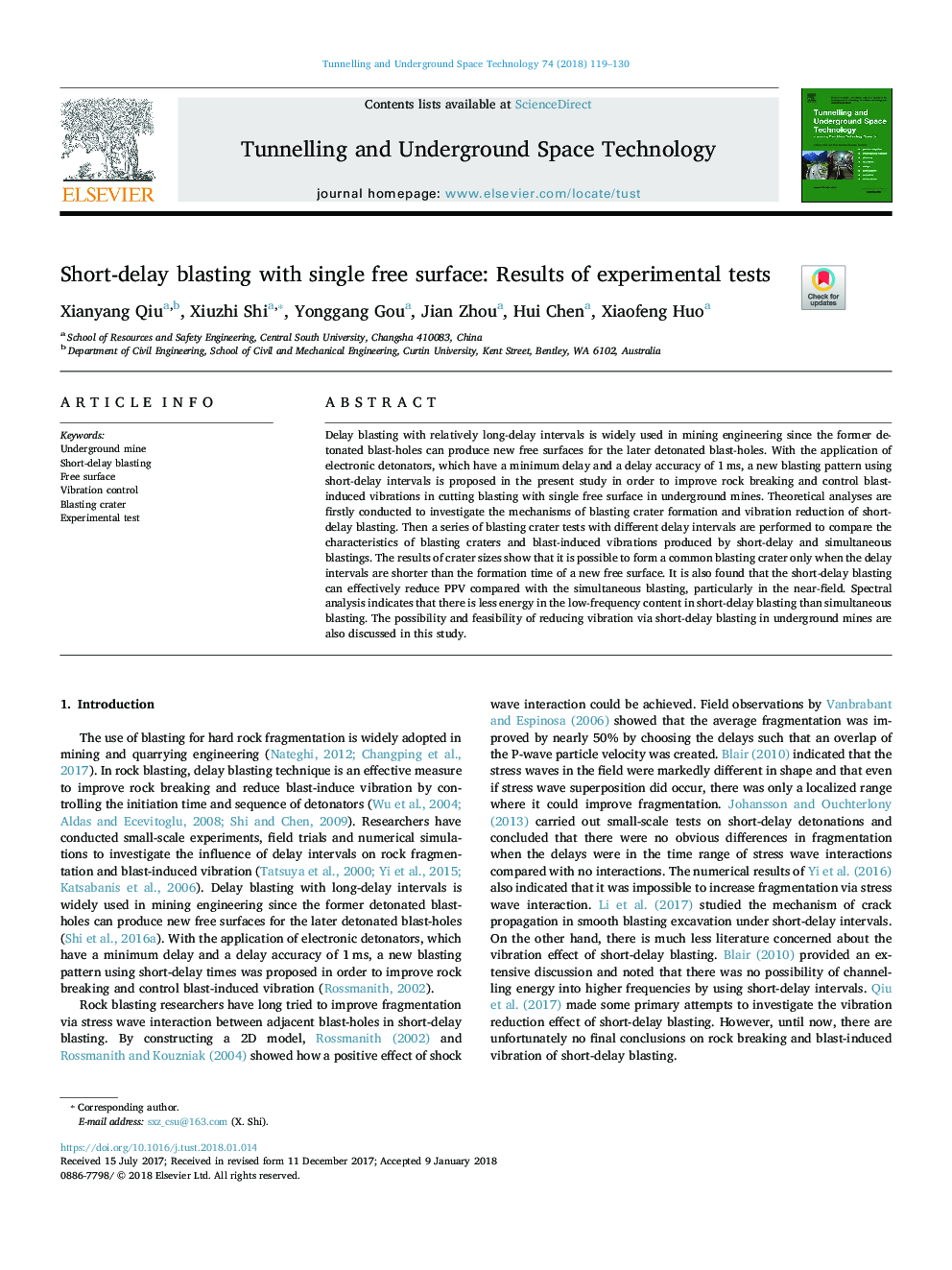| Article ID | Journal | Published Year | Pages | File Type |
|---|---|---|---|---|
| 6782627 | Tunnelling and Underground Space Technology | 2018 | 12 Pages |
Abstract
Delay blasting with relatively long-delay intervals is widely used in mining engineering since the former detonated blast-holes can produce new free surfaces for the later detonated blast-holes. With the application of electronic detonators, which have a minimum delay and a delay accuracy of 1â¯ms, a new blasting pattern using short-delay intervals is proposed in the present study in order to improve rock breaking and control blast-induced vibrations in cutting blasting with single free surface in underground mines. Theoretical analyses are firstly conducted to investigate the mechanisms of blasting crater formation and vibration reduction of short-delay blasting. Then a series of blasting crater tests with different delay intervals are performed to compare the characteristics of blasting craters and blast-induced vibrations produced by short-delay and simultaneous blastings. The results of crater sizes show that it is possible to form a common blasting crater only when the delay intervals are shorter than the formation time of a new free surface. It is also found that the short-delay blasting can effectively reduce PPV compared with the simultaneous blasting, particularly in the near-field. Spectral analysis indicates that there is less energy in the low-frequency content in short-delay blasting than simultaneous blasting. The possibility and feasibility of reducing vibration via short-delay blasting in underground mines are also discussed in this study.
Related Topics
Physical Sciences and Engineering
Earth and Planetary Sciences
Geotechnical Engineering and Engineering Geology
Authors
Xianyang Qiu, Xiuzhi Shi, Yonggang Gou, Jian Zhou, Hui Chen, Xiaofeng Huo,
